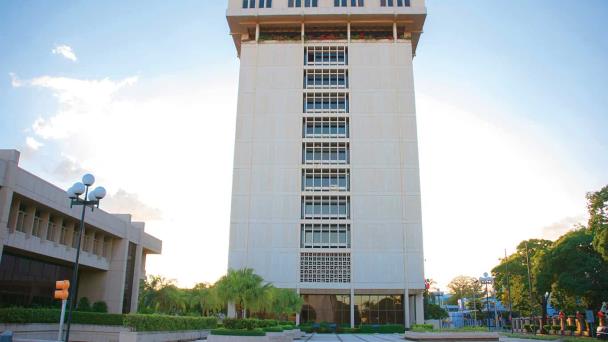The Central Bank of the Dominican Republic (BCRD) once again increased its interest rate of monetary politicsthis time from 7.25 to 7.75% per year, being the highest percentage since January 2009, when it was set at 8.50%.
The institution reported yesterday that, at its meeting of monetary politics July, decided to increase its interest rate of monetary politics at 50 basis points. In this way, the rate of the permanent liquidity expansion facility (1-day Repos) went from 7.75 to 8.25% per year and the interest-bearing deposit rate (Overnight), from 6.75 to 7.25% per year.
At the end of 2021, the Central Bank began a process of monetary normalization through increases in its interest rate. monetary politics and reduction of excess liquidity in the financial system, with the aim of counteracting inflationary pressures, avoiding risks of overheating of the economy, as well as a deterioration of the differential with respect to external interest rates.
the Dominican currency has appreciated, reports the Central Bank
The rate of monetary politics is the rate established by the Central Bank as a target and reference for interbank operations, that is, for loans between banks, which in turn influences the behavior of the rates that banks apply to their portfolio products, explains the Association of Multiple Banks of the Dominican Republic (ABA).
He emphasizes that, if it rises, it is that the Central Bank tries to contract the inflation (which in June stood at 9.48% year-on-year), impacting the purchasing power of market agents (individuals and companies), by somehow affecting internal aggregate demand.
When it rises, it also leads to a gradual increase in interest rates in the different types of credit and deposit products in the financial system, depending on whether they are contracted at a fixed or variable rate, details the ABA.
From August 2020 to November 2021, the Central Bank maintained the rate at 3.00% per year. But, from December 2021 it began to increase it, taking it to 3.50%, to then raise it to 4.50% in January, keep it at 5.00% in February and March, then to 5.50% in April and May, raise it to 6.50% in June, then at 7.25% in July and now at 7.75%.
The Federal Reserve (central bank of the United States) also increased the reference rate by 75 basis points last week, accumulating an increase of 225 basis points this year, while also anticipating that they would be making additional adjustments in the remainder of 2022.
With this increase, which is the fourth since the Fed (US central bank) began to raise rates in March, the interest rate The official price of the largest economy in the world now stands at a range of between 2.25% and 2.5%.
The Dominican Central Bank reiterated that in Latin America, almost all the central banks of the region accumulate significant increases in their reference rates from 2021 to face the high levels of inflationas is the case of Argentina (2,200 basis points), Brazil (1,125 basis points), Chile (925 basis points), Paraguay (725 basis points), Colombia (725 basis points), Costa Rica (675 basis points), Peru (575 basis points), Uruguay (525 basis points), Mexico (350 basis points), Nicaragua (150 basis points), and Guatemala (50 basis points).
The Central Bank highlighted that the Dominican economy “maintains a high dynamism”, having registered a year-on-year growth of 5.8% during June of this year. He reiterated that the forecast models point to economic growth for the end of this 2022 around 5.0%.








